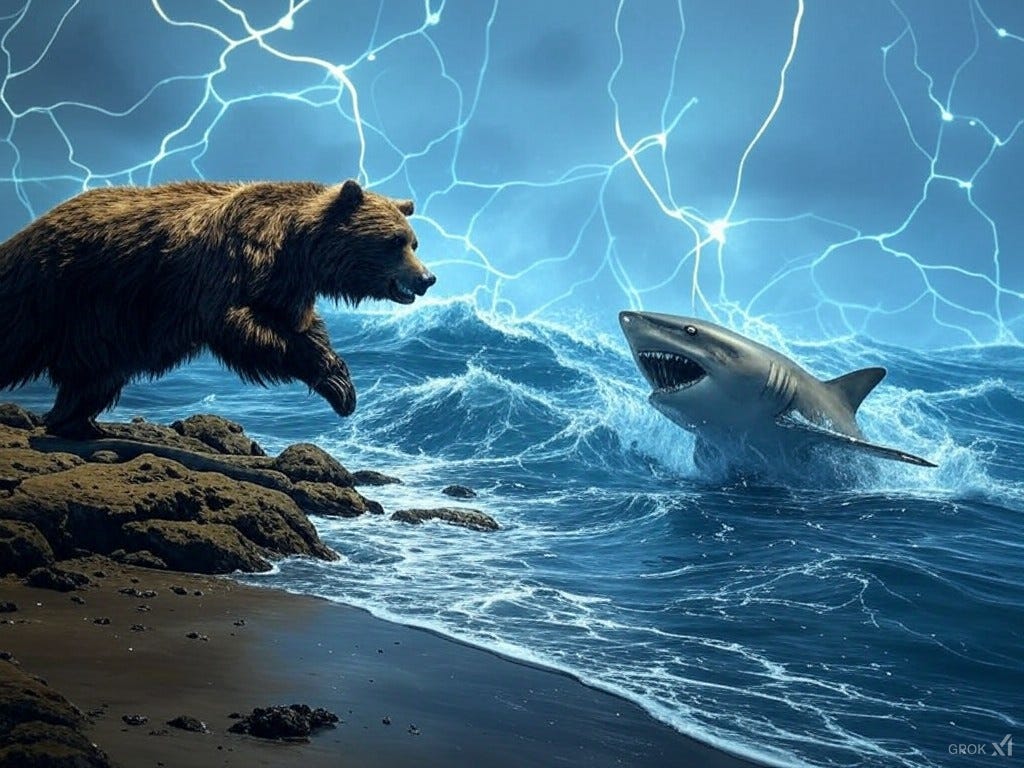Decoding the Hidden State: How Grok Answers "What Would Happen If a Bear Chased a Shark Into the Ocean?"
Explaining what the "hidden state" is, how it evolves over time to encode text meaning into numbers, gaining contextual awareness as it progresses through the model's layers.
When you ask Grok a whimsical question like, "What would happen if a bear chased a shark into the ocean?", the model doesn't just look at words in isolation. Instead, it uses something called the hidden state—a collection of vectors that evolves over time as it moves through the layers of computation within the model. Each layer adds a new level of meaning to these vectors, transforming raw text into a nuanced understanding. Here's how this magical journey unfolds:
The Birth of the Hidden State: Embedding Vectors
First, we meet the Embedding Layer, where each word gets turned into a vector in a high-dimensional space. Think of this as translating words into a language the computer can understand:
"Ocean" might be represented by a vector like [0.12, -0.34, ..., 0.76] (imagine this with hundreds of numbers).
Words like "lake" would have a similar vector, differing slightly in these numbers, reflecting their semantic closeness.
At this stage, we're just mapping words to vectors, capturing basic relationships but not much about the sentence's meaning.
Adding Context: The Attention Layer
Next, these vectors move into the Attention Layer, where the real context magic happens. Here, Grok looks at how each word relates to every other word in the sentence:
The sentence "What would happen if a bear chased a shark into the ocean?" has different implications than if we swapped "bear" and "shark."
Attention computes connections, essentially "drawing lines" between words to show how they influence each other. After this, our vectors become context-aware vectors, now carrying the context of the entire sentence.
World Knowledge: The Feed-Forward Network (FFN)
However, understanding context isn't enough to answer our question. We need to know about bears, sharks, and how they interact in different environments. This is where the Feed-Forward Network (FFN) steps in:
Knowledge Encoding: The FFN uses its billions of parameters, learned from vast amounts of text, to add depth. It applies non-linear transformations to the context-aware vectors, infusing them with insights from the world:
Bears aren't natural swimmers in deep water; they're not shark hunters.
Sharks thrive in the ocean, giving them an edge.
This step turns our vectors into refined context vectors or FFN-enhanced vectors, now packed with both sentence context and real-world knowledge.
Stabilizing the Journey: Normalization
To keep everything in check, after each major transformation like attention or FFN, the vectors go through normalization (like RMS Normalization). This ensures they remain on a consistent scale, helping with training stability and model performance.
The Final Hidden State
This refined, context-rich hidden state is what Grok uses to generate an answer. It's not just about numbers anymore but a sophisticated representation that considers:
The unlikely nature of this scenario.
The behaviors of animals in their respective environments.
The physics of water versus land.
From Vectors to Text:
Output Layer: The model then uses these enhanced vectors to create logits, raw predictions for each word in its vocabulary. These logits are run through a softmax function to convert them into probabilities, from which the model selects the words to form an answer like:
"If a bear chased a shark into the ocean, the bear would probably give up the chase in deep water, as sharks have the upper hand in their aquatic domain. The bear might swim briefly but would likely retreat to the shore."
Conclusion
The hidden state in models like Grok evolves from simple word mappings in the embedding layer, through context addition in the attention layer, to knowledge integration in the FFN, all while maintaining stability with normalization. This journey from embedding vectors to refined context vectors demonstrates how AI interprets and responds to human queries, blending language comprehension with an abstraction of world knowledge.



